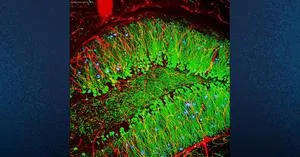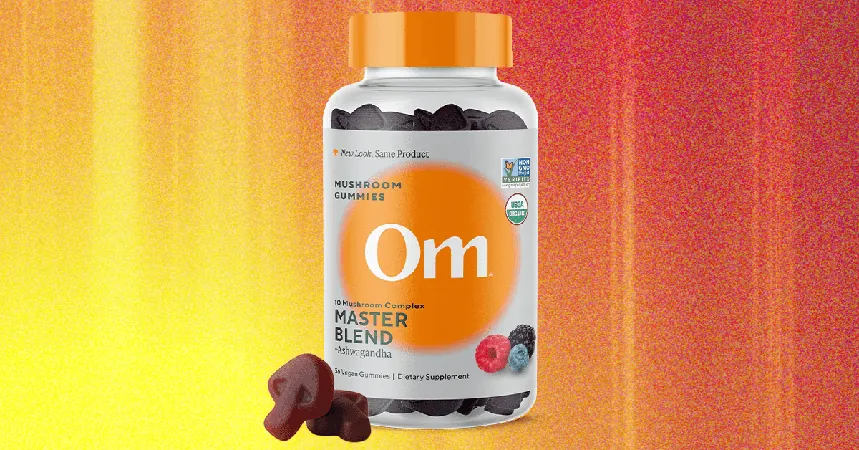
Tiny Titanium Dioxide in Food: A Hidden Threat to Your Health?
2025-05-12
Author: Daniel
Alarming New Study Uncovers Health Risks of a Common Food Additive
In a striking revelation, recent research uncovers the potential dangers of titanium dioxide, a food color additive prevalent in candies and ultra-processed snacks that has been banned in Europe.
Tiny titanium dioxide particles, often used to make treats look more enticing for children, may elevate blood sugar levels and disrupt glucose metabolism, according to groundbreaking findings published in *Food and Chemical Toxicology*.
Why Titanium Dioxide Is Under Fire
This study escalates concerns about titanium dioxide (TiO2), the widely utilized colorant that, while banned in the EU, continues to be used throughout the U.S. The implications are especially severe given the rising obesity and diabetes epidemic.
The researchers stress the urgent need for reevaluation of titanium dioxide nanoparticles as they could lead to grave metabolic health issues.
FDA's Recent Bans Raise Questions About Food Safety
The findings emerge just months after the FDA prohibited Red Dye No. 3, as nationwide legislation gains momentum to eliminate harmful food chemicals, particularly in school meals. Furthermore, HHS is pushing manufacturers to phase out several petroleum-based food dyes.
Understanding the Science: What Do the Nanoparticles Do?
Titanium dioxide nanoparticles are as small as one nanometer, approximately a thousand times thinner than a sheet of paper. Unlike larger TiO2 particles, these tiny particles may disrupt gut hormone production, leading to improper blood sugar control.
Results from the study involving mice showed that those fed with 1% titanium dioxide nanoparticles had alarming increases in blood sugar and evidenced hormonal disruptions related to digestion and glucose regulation.
Widespread Use Despite Dire Health Alerts
Popular snacks and candies—ranging from Skittles and Starbursts to Duncan Hines frosting—often contain titanium dioxide. However, this additive offers no nutritional value and poses multiple health risks including DNA damage and links to cancer.
The International Agency for Research on Cancer has even classified it as "possibly carcinogenic to humans." France took action by banning the additive in 2020, followed by the EU in 2022.
A Glimpse into the Future: New Regulations on the Horizon
Despite health risks, titanium dioxide remains in foods sold in the U.S., where it may appear on labels as "artificial color" or simply "colored with titanium dioxide." The FDA currently deems it "generally recognized as safe," though no regulations limit its particle size.
Proposed legislation in New York could ban titanium dioxide alongside other harmful substances used in food, marking a significant shift toward food safety.
The Study's Eye-Opening Findings Detailed
Conducted over 12 weeks on male mice, the research aimed to determine how titanium dioxide particle size impacted health outcomes, especially regarding gut hormones and glucose levels. Each mouse's weight and glucose levels were monitored meticulously.
Findings suggested that nanoparticles might cause more severe health risks than larger microparticles, due to their ability to penetrate tissues more easily and linger in the body longer.
Conclusion: Take Action Against Titanium Dioxide Exposure
As calls to ban this harmful ingredient grow louder, it’s wise for consumers to scrutinize ingredient labels carefully, minimize intake of ultra-processed foods, and favor organic options to shield themselves from this potential health crisis.
The research emphasizes the importance of further studies to fully understand the long-term health consequences, raising a pressing question: How many other hidden threats lurk in our beloved snacks?




 Brasil (PT)
Brasil (PT)
 Canada (EN)
Canada (EN)
 Chile (ES)
Chile (ES)
 Česko (CS)
Česko (CS)
 대한민국 (KO)
대한민국 (KO)
 España (ES)
España (ES)
 France (FR)
France (FR)
 Hong Kong (EN)
Hong Kong (EN)
 Italia (IT)
Italia (IT)
 日本 (JA)
日本 (JA)
 Magyarország (HU)
Magyarország (HU)
 Norge (NO)
Norge (NO)
 Polska (PL)
Polska (PL)
 Schweiz (DE)
Schweiz (DE)
 Singapore (EN)
Singapore (EN)
 Sverige (SV)
Sverige (SV)
 Suomi (FI)
Suomi (FI)
 Türkiye (TR)
Türkiye (TR)
 الإمارات العربية المتحدة (AR)
الإمارات العربية المتحدة (AR)